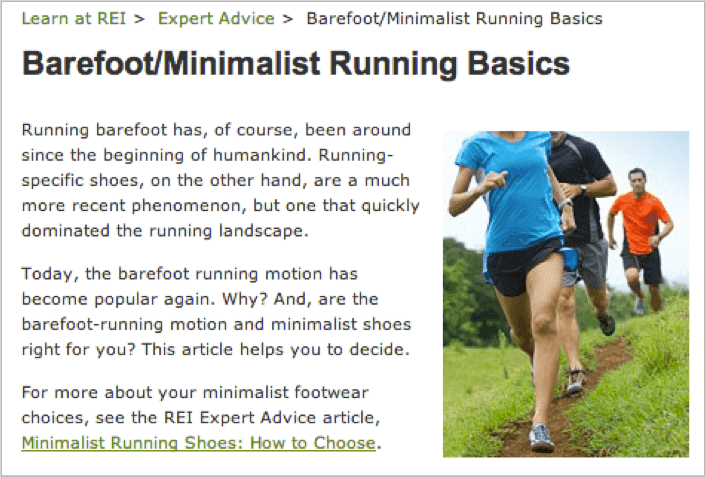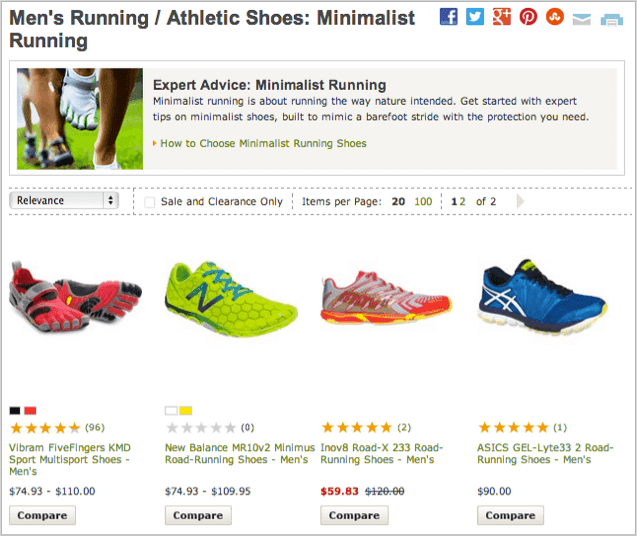The A to Z Guide To Creating More Relevant And Compelling Content
 As a marketer, you probably understand the importance of creating audience-centric content. But do you ever think about your audience’s context?
Context helps us fully understand our audience’s realities. It considers their environments, emotions, situations, habits and even their literacy levels.
As a marketer, you probably understand the importance of creating audience-centric content. But do you ever think about your audience’s context?
Context helps us fully understand our audience’s realities. It considers their environments, emotions, situations, habits and even their literacy levels.
Create More Relevant And Compelling Content Using Context To Fully Understand Your Audience
Click To TweetThe Building Blocks of Context
Let’s say you lead content marketing efforts for a startup that has launched a subscription-based personal fitness app. Following extensive audience research, you create a persona named Jeff. He represents your highest-opportunity market segment. His profile flawlessly unites your months of demographic, psychographic and stakeholder research. You even found a head-and-shoulders stock photo that represents him. You know a lot about Jeff, but your work isn’t finished. As Daniel Eizans, a crazy-smart digital strategist and information architect, puts it:Content is something we connect to emotionally, converse about or learn from … but content (and content strategy for that matter) without context is useless.In his must-read series of posts, Daniel outlined the most critical aspects of context:
- Personal-behavioral context: Physical, emotional and cognitive factors that influence the people who consume our content.
- Personal-situational context: Situations that drive someone’s need for our products and services.
- Situational-behavioral context: Scenarios that can guide our content creation (types, voice and tone, editorial direction, etc.)
- Ambient data: Factors in someone’s environment (time of day, device, connection speed, browser, etc.) that may influence their content comprehension.
After years of inattention to his health, Jeff is recommitting to exercise. He needs a cost-effective, convenient program that can quickly generate results. He’s a self-starter, but he needs clear and trustworthy guidance. Can he find it at his local gym? A great app or website? Personal training? He isn’t sure and he’s open to anything. Following a long workday, Jeff researches some options from his couch. He uses his smartphone because his tablet is trapped in his son’s bedroom until little Billy is safely asleep.
The A-Z Context Alternative
That’s a lot of context beyond your typical persona. And any content creator would crave such a solid foundation for marketing. But let’s be realistic: Most of our clients and organizations don’t devote the time, resources or energy for this level of thinking. Building support and consensus for persona development can be challenging enough. So can we still consider audience context on a less-ambitious scale? Absolutely. Here’s a simple approach. In the Art of Explanation, Lee LeFever contends that most organizations suffer from explanation problems – an inability to make products and services relevant to their audiences. A major reason, according to LeFever, is our inability to consider context. He views audience context on an A-to-Z continuum: Adapted from The Art of Explanation by Lee LeFever
Back to our earlier example: If Persona Jeff is unfamiliar with your app, or why he should even consider an app, he’s closer to the “A” end of the scale. If he’s already a personal fitness freak, he lands at (or near) “Z.” As explainers – and marketers – we want to lead him towards that “Z” end.
Taken a step further: At the “A” end of the continuum, Jeff wants (and needs) to understand why he should pay attention to you, while at “Z” he’s more interested in how your product or service works. And somewhere in the middle of your A-to-Z range, he needs a mix of why and how:
Adapted from The Art of Explanation by Lee LeFever
Back to our earlier example: If Persona Jeff is unfamiliar with your app, or why he should even consider an app, he’s closer to the “A” end of the scale. If he’s already a personal fitness freak, he lands at (or near) “Z.” As explainers – and marketers – we want to lead him towards that “Z” end.
Taken a step further: At the “A” end of the continuum, Jeff wants (and needs) to understand why he should pay attention to you, while at “Z” he’s more interested in how your product or service works. And somewhere in the middle of your A-to-Z range, he needs a mix of why and how:
 Adapted from The Art of Explanation by Lee LeFever
Traditionally, marketers have focused (too much) on how. And while we must still consider how, the most effective content marketing has a heavy dose of why.
REI understands this full range of audience needs. Their “basics” expert articles cover the “A” end of the continuum, educating audiences about why a barefoot/minimalist running is popular (among countless other topics). They recommend books on the topic, discuss how it affects a runner’s foot strike, and share how to get started:
Adapted from The Art of Explanation by Lee LeFever
Traditionally, marketers have focused (too much) on how. And while we must still consider how, the most effective content marketing has a heavy dose of why.
REI understands this full range of audience needs. Their “basics” expert articles cover the “A” end of the continuum, educating audiences about why a barefoot/minimalist running is popular (among countless other topics). They recommend books on the topic, discuss how it affects a runner’s foot strike, and share how to get started:
 Once a visitor has learned the basics, they’re led to how to choose content. They learn the two main types of minimalist shoes, why they’d select each type, and popular related products. This why/how content is ideal for someone in the middle of the A-to-Z continuum – probably in the “LMNOP” range.
Once a visitor has learned the basics, they’re led to how to choose content. They learn the two main types of minimalist shoes, why they’d select each type, and popular related products. This why/how content is ideal for someone in the middle of the A-to-Z continuum – probably in the “LMNOP” range.
 And, of course, REI would happily sell anyone a pair of minimalist running shoes. Their product listings include the details, specifications and reviews we expect during an e-commerce experience. By now, audiences have progressed to the “Z” end of the continuum:
And, of course, REI would happily sell anyone a pair of minimalist running shoes. Their product listings include the details, specifications and reviews we expect during an e-commerce experience. By now, audiences have progressed to the “Z” end of the continuum:

Six Questions to Assess Context And Create Compelling Content
If all this context talk leaves you dizzy, here are a few questions to get started:1. What do you know about your audience’s context?
Think about some scenarios where your audience may need or want your content. In each scenario, what are their emotions and state of mind? What are they doing, and where are they? What can we assume about their reading levels? What about their device and environment?2. Where does your audience fall on the continuum?
Pick a handful of scenarios and determine where they fall on the audience continuum. If they need a lot of guidance, place them near the “A” end. If they’re already your most loyal customers, they should be firmly at “Z.” Somewhere in between? Find the range that seems most appropriate.3. How can our content address this stage of the continuum?
At the “A” end of the continuum, your audience is probably unaware of the need for your product or service – and they may not even know your organization. Your content must disrupt their status-quo thinking. Your “Z” audiences, however, may want your latest special offers, deep-dive demos, reviews, product comparisons and selection advice. If the audience falls somewhere in the middle, offer a mix of “why” and “how” content.4. What’s the right channel or tactic for this message?
Resist your tactic-first (“this would make a great video!”) impulses. Instead, consider your audience, their stage and your message. If video (or email marketing or your blog or a case study) is the best approach, go for it – but let the audience and context inform the decision.5. How will they find our content?
Will we guide them to our content from organic search? A tweet or status update? Paid search? An offline tactic? It’s critical to create continuity between these “inward paths” and your content. The handoff – especially voice and tone, for starters – must seem natural and consistent.6. How can our content guide them on the continuum?
Your content should answer questions, educate, solve and share (for starters). In other words: it must close gaps in your audience’s mind – and guide them to the next stage of the continuum. What’s the most appropriate call to action to make that happen?Why Context Is Worth It
To fully appreciate an audience’s context, we must dig a little deeper. Understand our personas even more. Invest in additional audience research. Fully appreciate their customer journey. Ask more questions before we create content. Pay greater attention to our analytics and insights. Even for the most customer-centric organizations, this can be daunting. Daniel Eizans describes the feeling:The first place we will likely want to drift when we start asking ourselves these questions is to a feeling of hopelessness. There’s no way in hell we can account for all of these factors, right? How can we possibly tailor an experience that satisfies all of the needs of all users when such a wide array of attitudes, experiences and environmental factors can influence a user at any given time?Yet the perseverance is worth it – and adding a stronger contextual emphasis doesn’t have to be an all-or-nothing proposition. You can: Prioritize an audience or journey stage. Look for a solid opportunity to build out content for one or two personas. Plan a pilot project that can serve as a springboard to a broader effort. Opt for stealth content strategy. Context doesn’t have to be a THING; you can bake it into projects and initiatives already underway. Work a stronger contextual focus into a planning or strategy document, advocate for audiences during a campaign, or bring a “why/how” focus to your social content planning. Choose progress over perfection. This mantra, shared by Sara Wachter-Boettcher at Confab Central, really applies to any content effort. We all juggle so many stakeholders, so many opinions and so many competing priorities. Focus on progress instead of what could’ve or should’ve happened. Understanding Persona Jeff’s context is worth it. Understanding ALL of your audience contexts is worth it. Jonathan Colman, a content strategist at Facebook, says it best:
The ability to build connections with people — to truly understand who they are and what their experience is like — and shape product experiences to best fit their needs is what will set the most successful practitioners of content strategy apart from others.Context is the extra step that makes your content marketing more relevant, natural and compelling. It focuses your efforts and favors content quality over output. It’s worth the investment.


